- Bestandteile des Reagenzienkits
| Spezifikationen | 50T | 100T |
| Katze. NEIN. | SN0205 | SN0206 |
| DNA-Extraktionssäulen (Satz) | 50 (Satz) | 100 (Satz) |
| Reagent Buffer I | 20 ml | 2×20 ml |
| Reagent Buffer II | 15 ml | 15 ml |
| Reagenzpuffer C | 30 ml | 2 × 30 ml |
| Elutionspuffer 1 | 15 ml | 2 × 15 ml |
| Waschpuffer | 20 ml | 20 ml |
| RNase A | 1ml | 1ml |
| Bedienungsanleitung | 1 | 1 |
- Lagerung
Dieses Kit sollte bei Raumtemperatur gelagert werden (15-25℃) trocken und lagerfähig 12 Monate. DNA-Extraktions-Reinigungssäulen können in einer kühlen und trockenen Umgebung bis zu gelagert werden 1 Jahr. RNase A enthält ein Konservierungsmittel und kann bei Raumtemperatur transportiert werden, aber zur Langzeitlagerung, es sollte bei -20℃ gehalten werden.
- Anweisungen zur Verwendung des Reagenzienkits
3.1 Dieses Kit ist für molekularbiologische Forschungszwecke bestimmt und sollte nicht zur Diagnose oder Behandlung von Krankheiten verwendet werden.
3.2 Einige Bestandteile des Kits enthalten Reizstoffe; Es ist ratsam, die erforderlichen Vorsichtsmaßnahmen zu treffen (wie das Tragen von Schutzkleidung und Schutzbrillen).
3.3 Die Verwendung dieses Kits erfordert zusätzliche Ausrüstung wie eine Hochgeschwindigkeitszentrifuge, Wasserbad (Metallbad), Vortexmixer, Wasserfreies Ethanol, flüssiger Stickstoff, Chloroform, steriles entionisiertes Wasser, und EP-Röhren.
- Einführung in das Reagenzienkit
The new plant genome DNA-Reinigung kit provides a rapid method for DNA purification. It effectively precipitates DNA with specific reagent buffers II and C, collecting high-purity DNA through adsorption columns.
This kit is widely applicable for isolating samples from plant tissues and fungi, enabling the extraction of total DNA from plants and fungi within 30 Protokoll. The extraction process doesn’t involve toxic reagents like phenol-chloroform. Die extrahierte DNA kann direkt für nachgelagerte Experimente verwendet werden, z PCR und Southern Blot.
- Experimentelle Prinzipien und Verfahren:
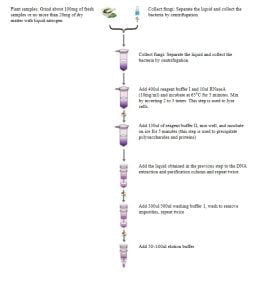
- Extraktionsprozess
Vorsichtsmaßnahmen vor Beginn des Experiments:
A. Reagent Buffer I and Reagent Buffer C tend to precipitate at low temperatures. It is recommended to heat them at 65°C for 5 minutes until the precipitates dissolve before normal usage.
B. Before using Waschpuffer 1, add the specified amount of absolute ethanol as indicated on the reagent bottle label and mark a check (√) on the label to indicate the addition of absolute ethanol.
C. The Elution Buffer is a 0.1x TE-Lösung enthält eine minimale Menge EDTA. Wenn EDTA nachfolgende Experimente beeinflusst, it is recommended to substitute the Elution Buffer with sterile deionized water.
1. Probenverarbeitung:
A. Materialsammlung und -lagerung
If freshly collected materials cannot be immediately used, place them in liquid nitrogen for cooling and finally store at -80°C. Getrocknete Materialien können bei Raumtemperatur gelagert werden.
B. If conditions permit, collect fresh materials whenever possible, as fresh materials contain fewer polysaccharides and polyphenols.
C. Beim Sammeln von Pilzen aus Flüssigkultur, separate the liquid and collect the fungal cells by centrifugation.
2. Weigh around 100 mg of fresh samples or not exceeding 20 mg of dry material and grind it with liquid nitrogen.
(Notiz: Different sample amounts may vary; it is advisable to optimize the sample amount through pre-experimental trials.)
3. Hinzufügen 400μl Reagent Buffer I and 10μl RNaseA (10 mg/ml), ensuring there are no clumps in the ground sample. Clumps are difficult to lyse, reducing the DNA yield. Auch, do not mix Reagent Buffer I and RNaseA before usage.
4. Bei 65 °C inkubieren 5 Protokoll, gently invert the mixture 2-3 mal. This step is used for cell lysis. If samples are difficult to lyse, extend the incubation time, but not beyond 30 Protokoll.
5. Hinzufügen 130μl Reagent Buffer II and mix well, then ice-bathe for 5 Protokoll (this step is used for precipitating polysaccharides and proteins).
6. Zentrifugieren Sie das Lysat 5 Minuten um 14,000 U/min (20,000×g).
(Notiz: Some plant materials may contain a lot of viscous substances at this step, which can shear DNA in the subsequent steps. daher, the ideal state is to remove these substances during this step. Nach Zentrifugation, transfer the supernatant to a new centrifuge tube. If there is a significant amount of flocculent material in the supernatant after centrifugation, it indicates that the initial sample quantity was too large. Consider reducing the initial sample amount.)
7. Carefully transfer the obtained liquid to a new centrifuge tube.
(Notiz: Approximately 450μl of liquid can be transferred; für einige Arten, it may be less than 450μl.)
8. Fügen Sie eine gleiche Menge hinzu Reagenzpuffer C and an equal volume of absolute ethanol to the lysate and mix well.
(Zum Beispiel: Add 450μl of Reagent Buffer C, then add 450μl of absolute ethanol. If the volume of the lysate is less than 450μl, reduce the amount of Reagent Buffer C proportionally. Adding Reagent Buffer C will cause slight precipitation, but it won’t affect subsequent experiments.)
9. Add the obtained liquid to the DNA extraction purification column (Bausatz) (jeweils etwa 650–700 μl), centrifuge at greater than 8,000 U/min für 1 Minute, Entsorgen Sie den gesammelten Abfall, und setzen Sie das Sammelröhrchen für den nächsten Schritt wieder in die Reinigungssäule ein.
10. Schritt wiederholen 9, add the remaining liquid to the DNA extraction purification column (Bausatz), centrifuge at greater than 8,000 U/min für 1 Minute, discard waste and the collection tube.
11. Platzieren Sie die DNA-Extraktions-Reinigungssäule (Bausatz) in das Sammelröhrchen, hinzufügen 300μl Waschpuffer 1,centrifuge at greater than 8,000 U/min für 1 Minute, discard waste, und platzieren Sie die DNA-Extraktions-Reinigungssäule (Bausatz) zurück in die Röhre für den nächsten Schritt.
(Notiz: Confirm the addition of absolute ethanol in Wash Buffer 1.)
12. Hinzufügen 500μl Waschpuffer 1 zur DNA-Extraktions-Reinigungssäule (Bausatz), Zentrifuge bei 14,000 U/min (20,000×g) für 2 Protokoll, extend centrifugation time appropriately to ensure the membrane is adequately dry.
13. Platzieren Sie die DNA-Extraktions-Reinigungssäule (Bausatz) in ein neues Zentrifugenröhrchen füllen, leave it uncovered, and incubate at 65°C for 2 Protokoll. Extend this step as needed to evaporate ethanol to prevent ethanol residue from affecting downstream experiments.
14. Pipette 100μl Elutionspuffer onto the column membrane, Zentrifuge bei 12,000 U/min für 2 Protokoll.
(Notiz: 1. Using 50μl of Elution Buffer to elute DNA can increase DNA concentration but reduce the overall DNA yield; 2. The eluate containing DNA can be reapplied to the DNA extraction purification column and centrifuged at 12,000 U/min für 2 minutes again to increase DNA yield.)
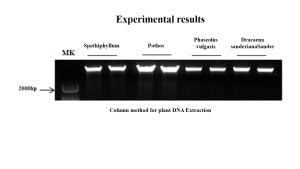
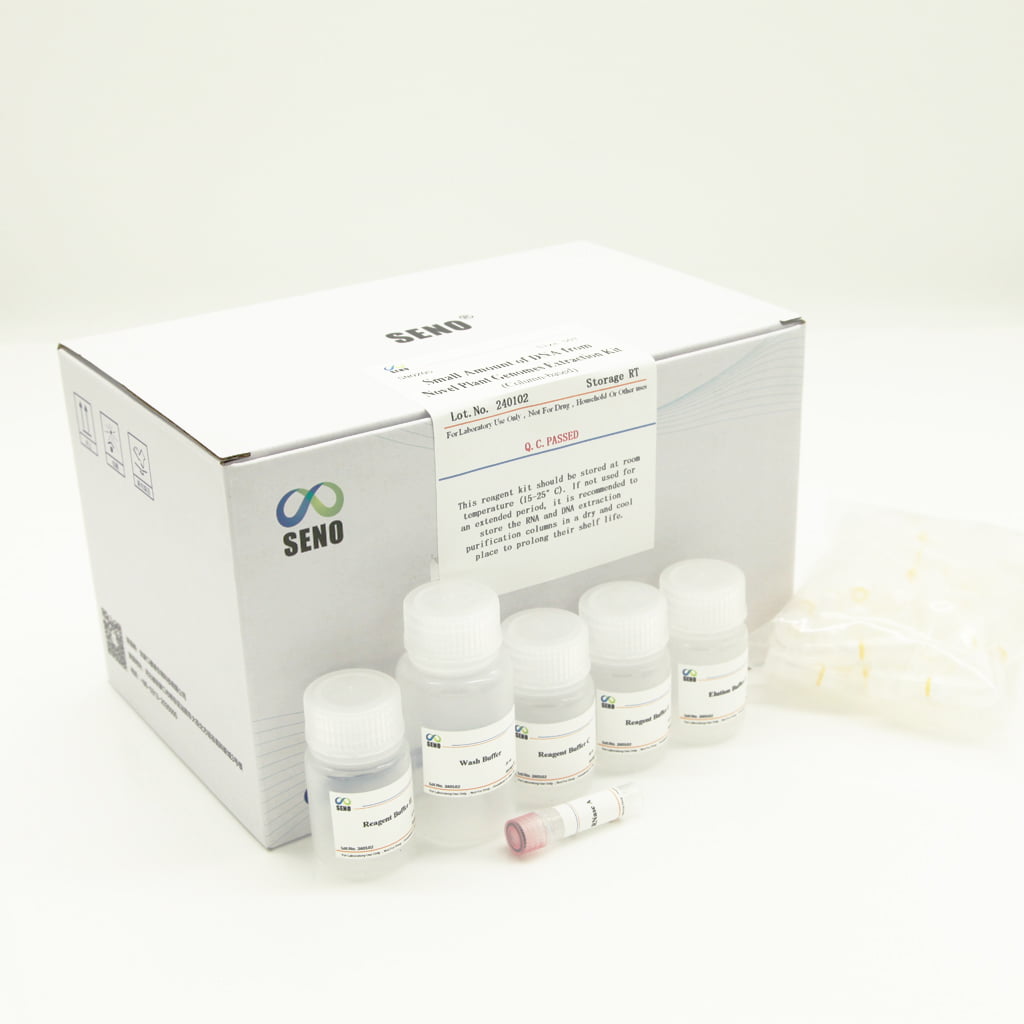
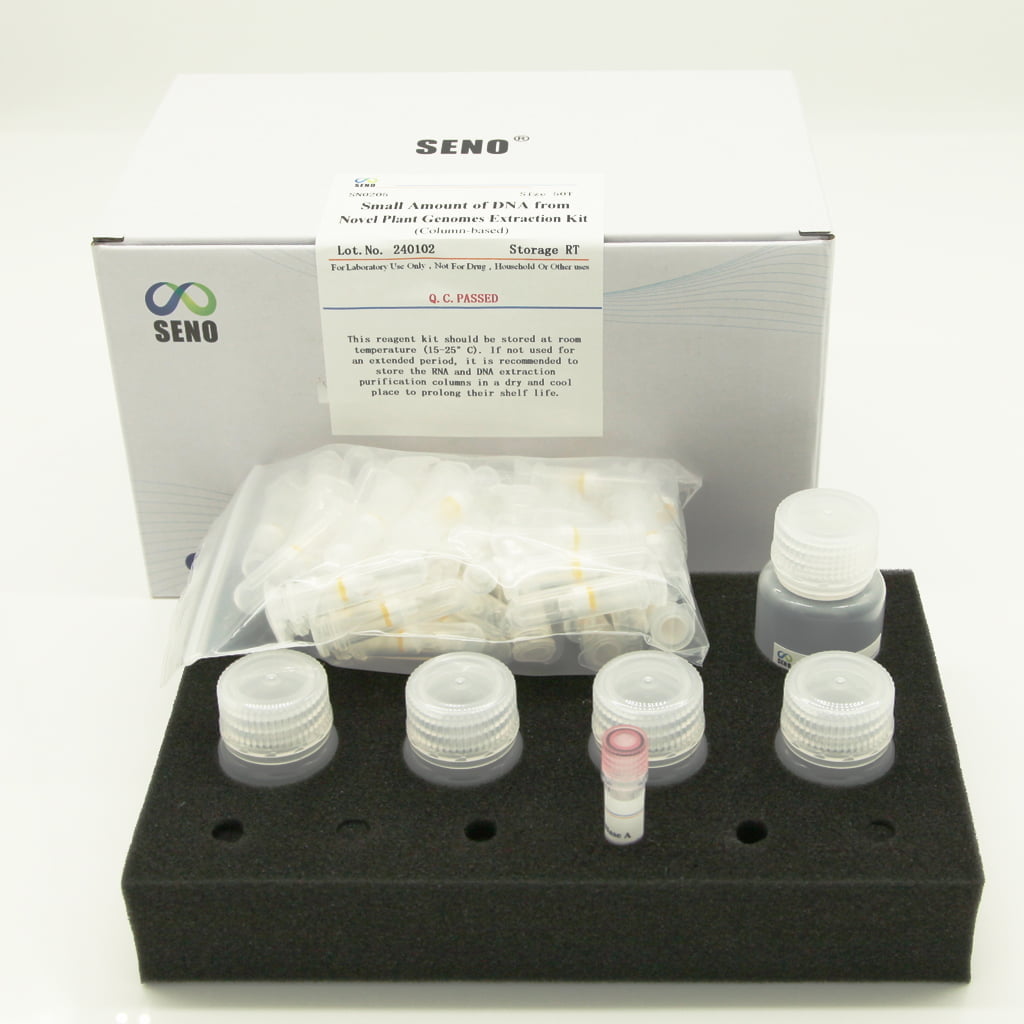
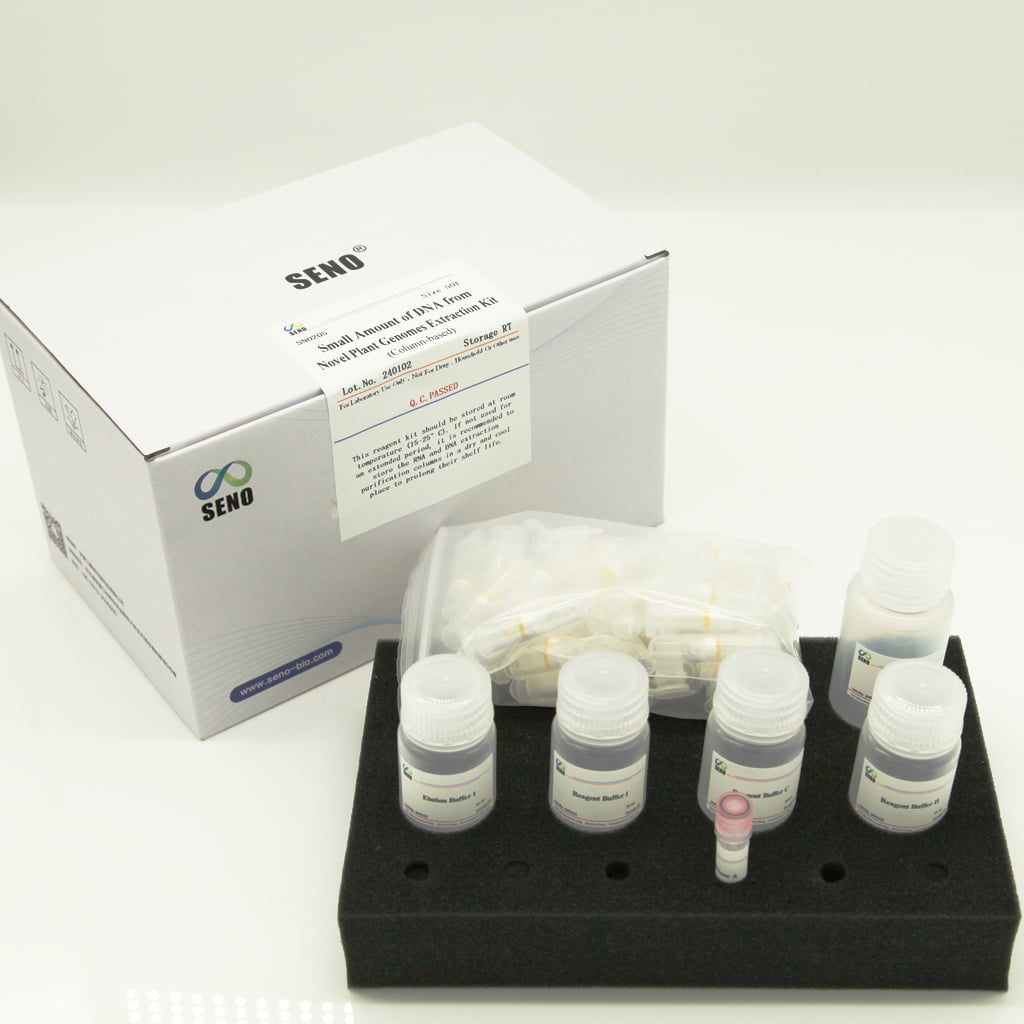
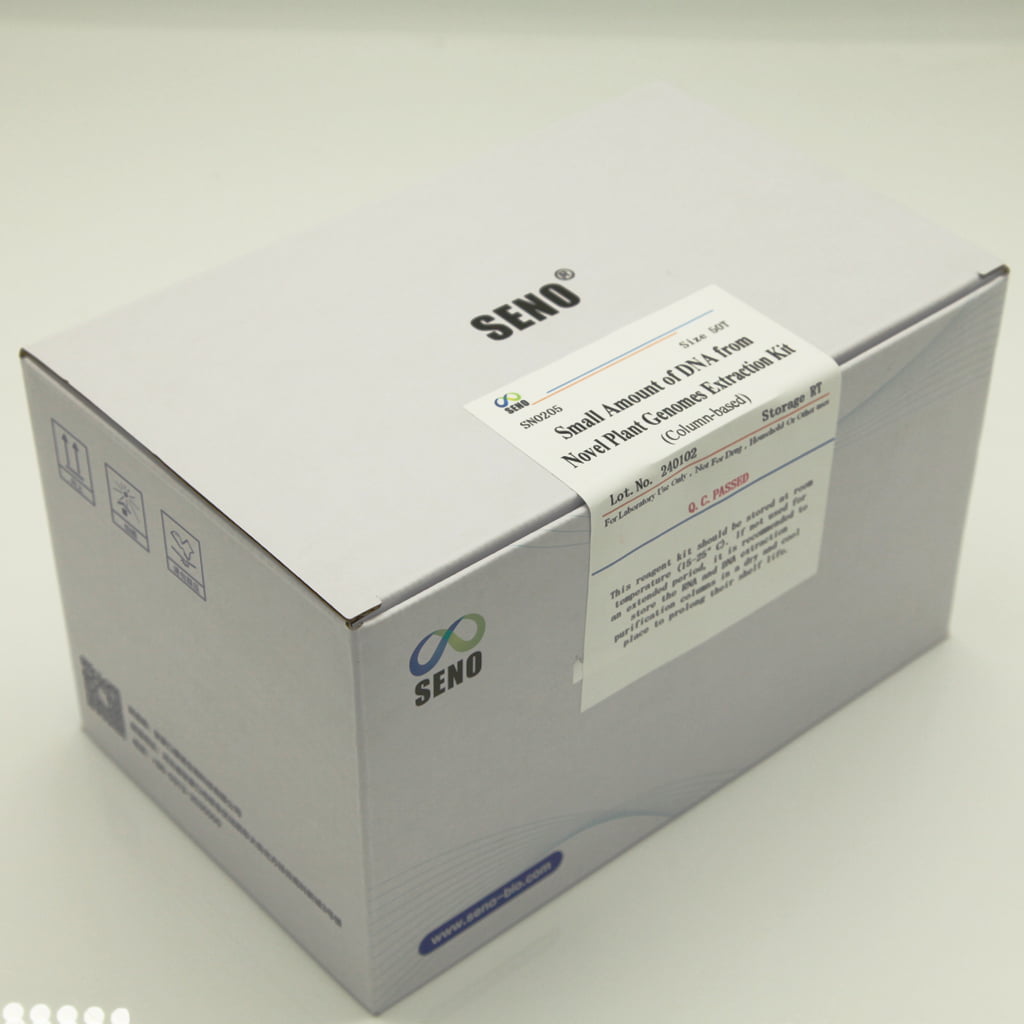
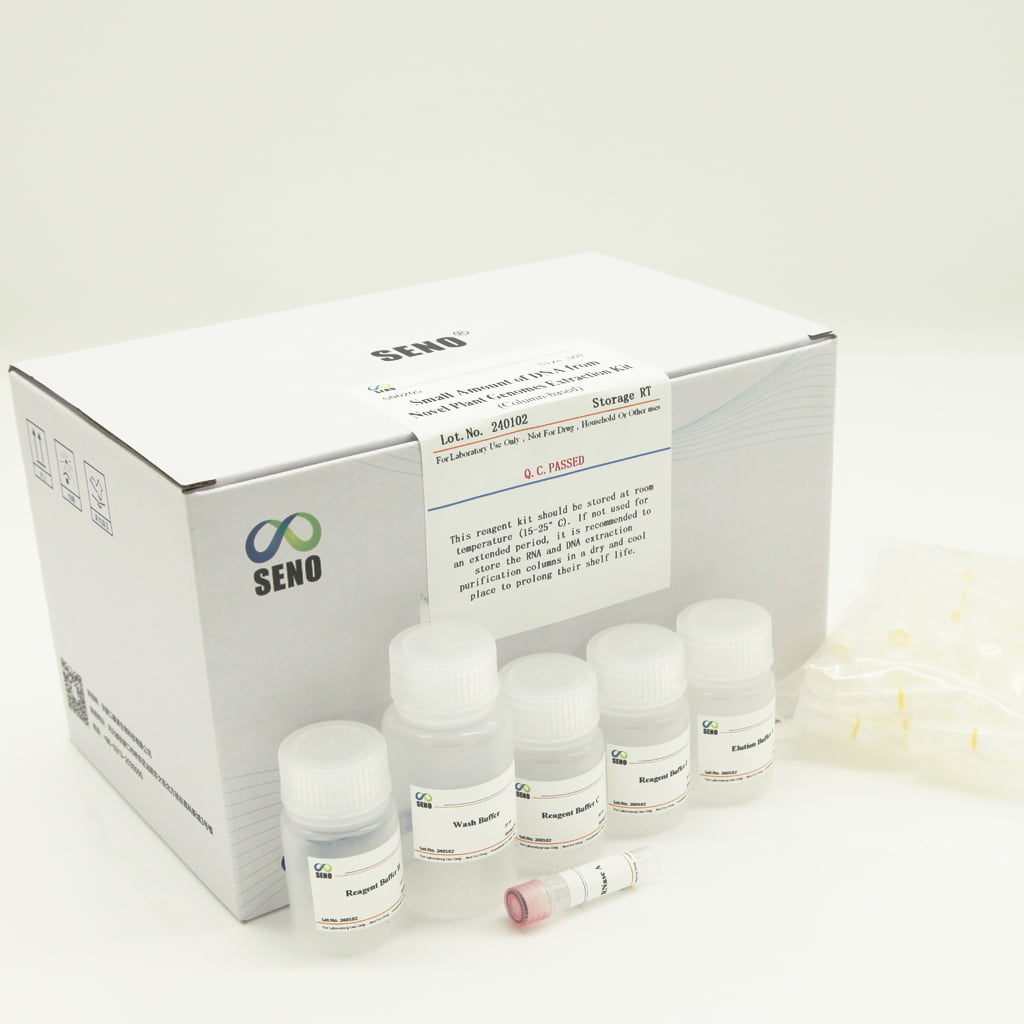
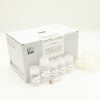
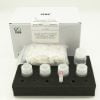
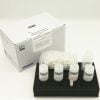
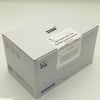
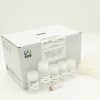
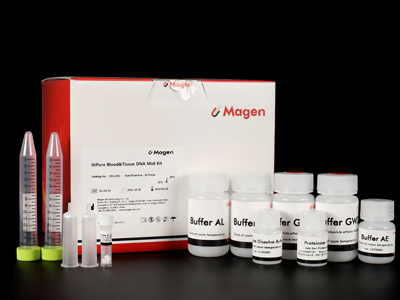
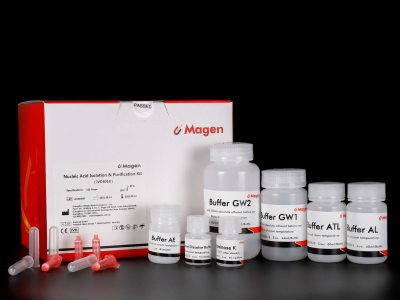
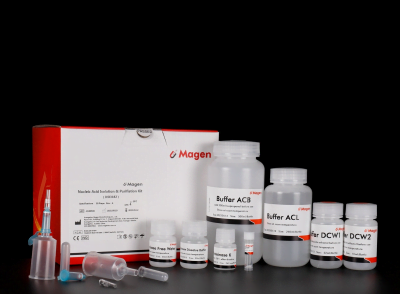
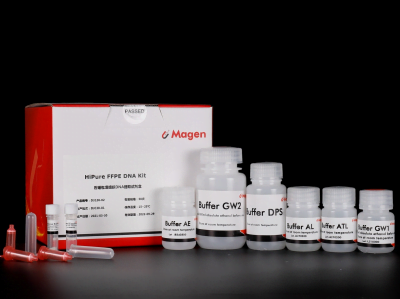
Bewertungen
Es gibt noch keine Bewertungen.